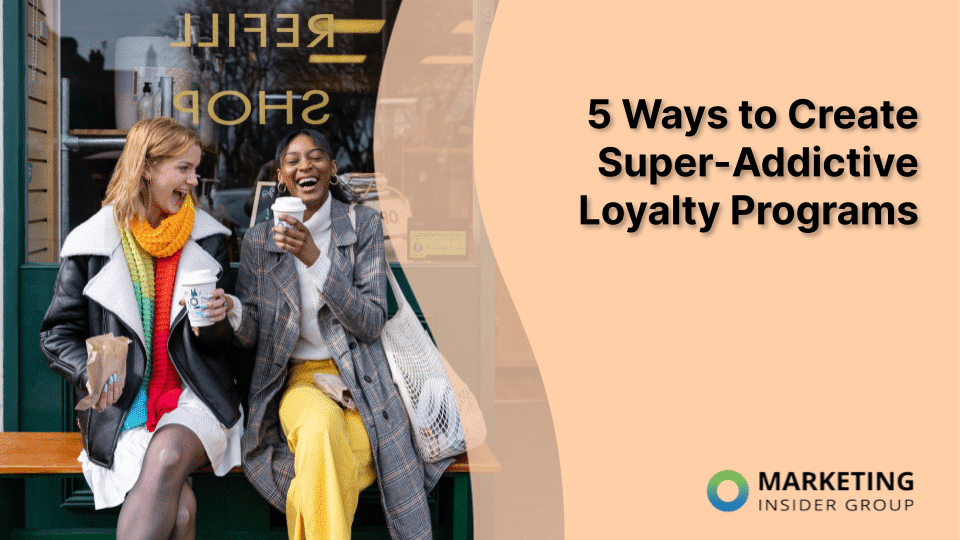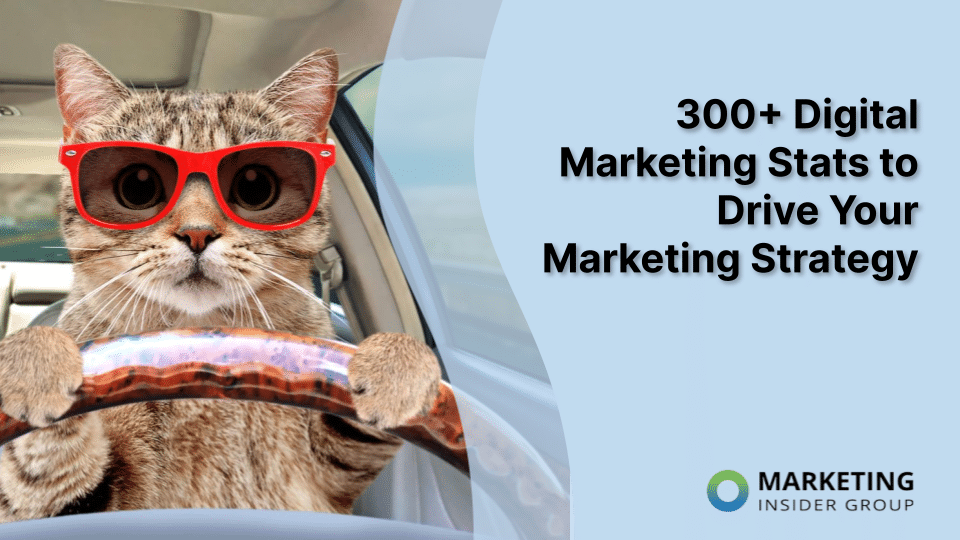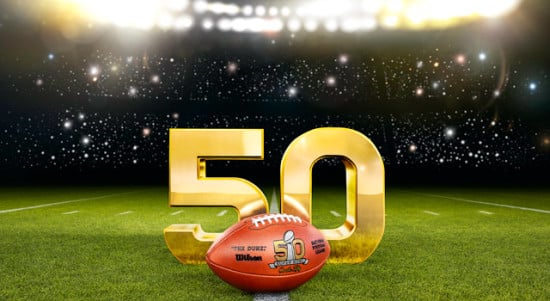
10 Digital Marketing Lessons from Super Bowl 50’s Ad Winners
Most of the time, TV advertisements are a minor annoyance that we do our very best to avoid (thank you, Netflix!) but once a year, the tables turn…
When the Super Bowl hits our screens the humble TV commercial becomes a must-watch, and for good reason.
A Super Bowl ad isn’t just another ad. For starters, the Super Bowl offers the most expensive ad slots in the world. More importantly, it’s a chance for brands to broadcast their message to more than 100 million viewers (not to mention those that watch the ads online and talk about them in articles – just like this one – in the days and weeks that follow).
Needless to say the cost and potential that’s attached to a Super Bowl ad means a hell of a lot is staked on those few second of airtime. An ad that fails during Mad Men? Not such a big deal. An ad that falls flat during the Super Bowl? Somebody’s probably getting fired.
This means that brands which buy up Super Bowl air time are not just out to make good ads – they’re out to make ads that are going to be remembered and talked about forever.
Consequently, the awesomeness of (many, not all) Super Bowl ads means there’s a hell of a lot of lessons we can learn from them – many of which can be applied to our own marketing, both off and online.
Ad: Pokemon – Pokemon20
Lesson: Nostalgia gets us every time
2016 marks the 20th Anniversary of Pokemon, and with it, their first ever Super Bowl ad: a Nike-esque video that’s rife with subtle references only true fans of the much loved Japanese franchise are likely to spot.
The ad gives very little away. They’re not directly trying to plug a new product (although word on the grapevine is we’ll be getting one later in the year). Instead the ad serves simply to drum up excitement and spark nostalgia in their now (mostly) adult fanbase.
This ad proved such a success because it made fans feel nostalgic for the franchise. However what’s really clever is how they evoked this nostalgia. They didn’t show characters or scenes that would jog fan’s memories and take them back to key points in the games or shows.
Instead they used words, cinematography, and subtle hints to help recreate how playing the games or watching the shows made the fans feel.
The ad doesn’t evoke visual nostalgia, it recreates feelings and emotions.
I’m no psychology expert but if you ask me, that’s far more powerful.
Key Takeaway: Nostalgia can be an overwhelmingly strong emotion. However, for maximum impact, aim to evoke nostalgic feelings in your audience, instead of just memories.
Ad: Taco Bell – Quesalupa Reveal
Lesson: Get your marketing channels working in sync
Taco Bell used their Super Bowl 50 ad slot to unveil this beauty:
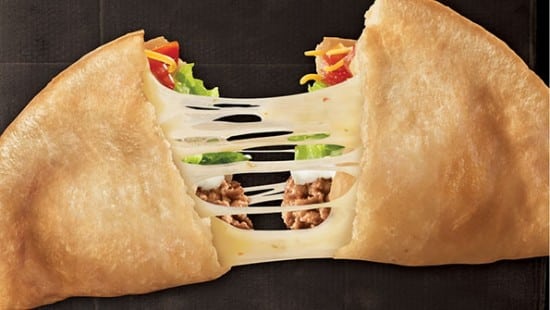
This is The Quesalupa: beef, cheese, sour cream, lettuce, and tomato, all inside an authentically-Mexican (perhaps…) cheese-stuffed shell.
It’s not the ad itself that I want to draw your attention to on this one however. It’s what Taco Bell did alongside it.
In the lead-up to the Super Bowl Taco Bell set about building buzz around their latest creation with a series of teasers and publicity stunts that dropped (big) hints as to the nature of the new product.
In the first week of February they even allowed customers to pre-order the still secret new menu item. 67,000 customers took them up on the offer.
By the time the product was officially unveiled #TacoBell and #Quesalupa were trending on Instagram while the brand’s Snapchat had seen around 2.6 million views.
But Taco Bell didn’t stop there.
To accompany the build-up to and final reveal of the Quesalupa, Taco Bell devised a paid search campaign that targeted both broad phrases (like Super Bowl) alongside branded keywords and phrases used in the Super Bowl ad itself (such as Bigger Than).
This clever cross-channel marketing campaign enabled the brand to exploit the Super Bowl buzz to the max by dominating the search results for related terms before, during, and after the event.
Key takeaway: Don’t run single-channel digital marketing campaigns; find ways to integrate various channels together to add extra weight to your campaigns.
Ad: Avocados from Mexico – Avocados in Space
Lesson: Observation comedy rocks
“Comedy” is a popular genre for Super Bowl ads but unfortunately it doesn’t always go to plan.
One definite success was this year’s ad from “Avocados from Mexico”. The 60 second commercial centered on a group of aliens taking a tour group around the Museum of Earthly Wonders to see “all the unique stuff the little blue planet has to offer”.
The ad pokes fun at a bunch of earth’s modern day quirks such our emoji “alphabet”, the white/gold dress that “caused a civil war” and “economy” class on a plane, described by the museum tour guide as a “21st Century torture device”.
Like all observation comedy, it’s funny because it’s true. Almost, anyway. The white/gold dress (or was it black and blue?!) didn’t cause an actual civil war, emojis aren’t an alphabet, and an economy class flight isn’t quite a match for these ancient torture devices.
That said, “the dress” caused a crazy amount of commotion for what was, at the end of the day, just a picture of a dress. Economy class flights, while not quite “torture” can be incredibly unpleasant. And emojis? So they’re not officially an alphabet (yet) but some might say we rely on them to express our emotions a little too much…
The ad makes us laugh because it takes everyday, ordinary elements of our lives and presents them out of context. This lets us see ourselves and our world from a different point of view – one that shows us how comically odd some of the things we do actually are.
Another key element of this, and other observational comedy, is the fact it’s relatable to the masses. This matters because it’s critical that most of the audience “gets” the joke. You probably wouldn’t for instance, see a stand-up comedian make an observational joke about the day-to-day life of a brain surgeon because few, if any of the audience would understand it. A joke about working in an office however, is something most of us can relate to.
Key Takeaway: Bring humor into your marketing, by all means, but (unless you’re intentionally targeting a very niche audience) make jokes that the masses can relate to.
Ad: Heinz Ketchup – Weiner Stampede
Lesson: We will always be suckers for a cute animal video
Lolcats might have had its day but commercials like this show that however many pictures and videos of our furry friends we’re exposed to, we still can’t resist the lure of an animal in an ad.
It should come as no surprise then that Heinz’s stampede of sausage dogs was such a hit this year.
The ad focused on a herd of tiny dachshunds dressed as hot dogs frolicking through fields on their way to a group of condiment-clad human-kind, all to the backdrop of classic ballad “Without You”.
It’s fun, heartwarming and downright adorable: all the ingredients needed to get reactions like this:

And this:

And this:
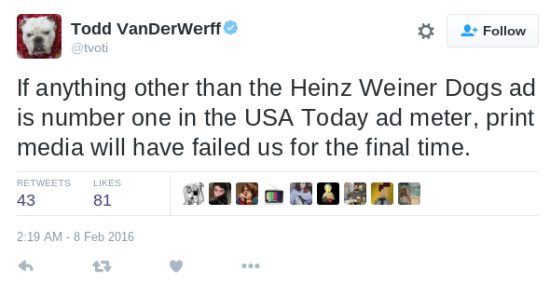
Best of all, Heinz haven’t shoehorned an animal into an ad for the sake of ticking the “cute box”. The cute factor works, but it’s been exploited to say the least. Great marketing makes sense, and what makes more sense than hot dogs and Heinz?
Huge hats off to whoever’s behind this one.
Key Takeaway: Cute animals in ads attract attention, sure, but it’s cheap and lazy to slap a furry face on your marketing and expect to reap rewards. Use this one, but only in a context that feels natural.
Ad: Mountain Dew Kickstart – Puppymonkeybaby
Lesson: It’s okay to be weird
This:

Is one of the scariest things I’ve seen in a long while.
This is coming from me: a man who loves jumping out of planes (I like to think I don’t scare easy).
Judging by the comments over on YouTube and Twitter:
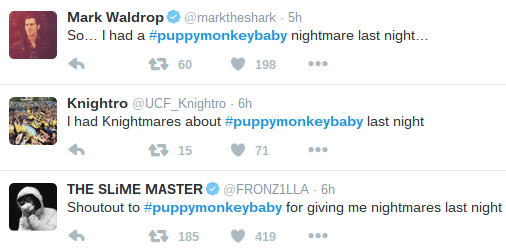
The internet agrees: puppymonkeybaby is probably the creepiest character ever to see the Super Bowl’s 60 seconds of fame.
In total the hashtag #puppymonkeybaby had 4x more in-game social mentions than any other hashtag. Unfortunately most the talk was was negative…

But you know what…?
Who the hell cares?
It got people talking, didn’t it?
The lesson here is that you don’t need to do something revolutionary or awe-inspiring to get tongues wagging. Surprising or shocking people can have the exact same result.
Key Takeaway: Push people just enough outside of their comfort zone that they’re happy to talk about whatever weird or wonderful thing they’ve just seen. You don’t want to offend people – you want them to feel they can open up (don’t create something you wouldn’t be happy to watch with your mom and dad).
Ad: Snickers – Willem Dafoe/Marilyn Monroe
Lesson: Simple ideas can have a big impact
At its core, this ad is essentially just Willem Dafoe dressed as Marilyn Monroe. Simple? You bet. But when it comes down to it, that’s one of the best things about it (after all, it’s often the littlest things that have the biggest impact).
The ad opens on the set of “The Seven-Year Itch” where “Marilyn” is filming what is arguably the most iconic moment of her career (and one of the most iconic moments in movie history, period):
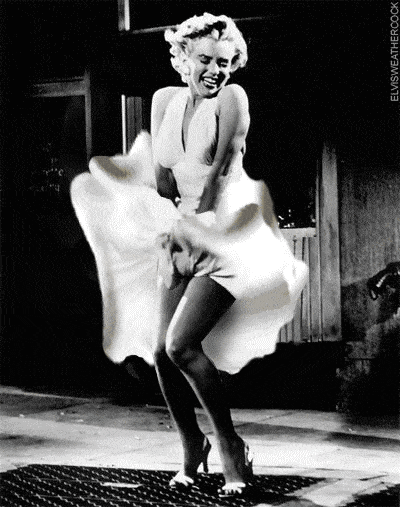
Unfortunately it quickly comes to light that the beautiful Marilyn Monroe (or for that matter, even a convincing lookalike) is nowhere in sight. Instead we’re treated to the sights and sounds of a grumpy Willem Dafoe, who is none-too-pleased about having to stand in a dress above a subway grate.
Thankfully “The Seven-Year Itch’s” director is on hand to help, and offers Willem/Marilyn a Snickers bar, stating the Snickers’ tagline “you’re not you when you’re hungry.”
Shock, horror, the Snickers bar works its magic and “moody” Marilyn disappears and is replaced with the real thing.
Key Takeaway: Done well, some of the simplest concepts can have the biggest impact. If your marketing strategies or content plans are getting too complicated, take a step back, break them down to their core components, and scrap the rest.
Ad: Colgate – Every Drop Counts
Lesson: Spread a message, don’t just spread your message
Colgate’s first ever Super Bowl ad saw the international dental brand do something quite unusual: they didn’t promote their products. In fact, their ad made no reference to the brand behind it until its closing moments.
Instead the ad served to promote the importance of conserving water. An important message anyway, but perhaps even more poignant right now considering the water crisis that’s currently taking place in Michigan.
Those 30 seconds of airtime are estimated to have cost Colgate around $5 million. Why then, with such a hefty fee on the table, did Colgate choose to allocate those precious few seconds to promoting not their brand, but a message encouraging us to save water?
In short: because the ad did promote their brand.
Not in the way that an ad like this promotes them:
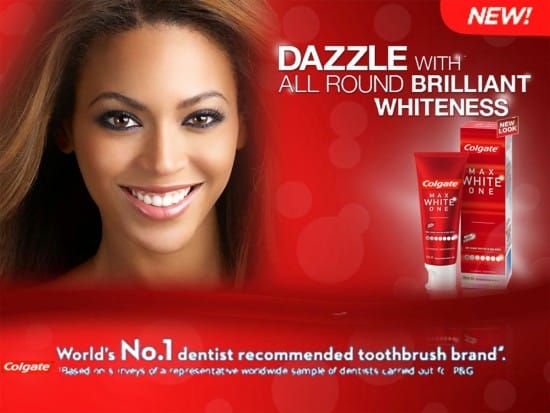
Their Super Bowl ad promoted them in a very indirect way.
The ad wasn’t designed to make consumers head out to buy Colgate toothpaste on the promise of fresher breath or a whiter, brighter smile. The ad serves instead to build brand loyalty by showing its human side and by painting Colgate as a brand that cares – a trait that’s having a greater impact than ever on how consumers spend their money.
Key Takeaway: Sometimes the most effective form of marketing is marketing that doesn’t directly promote yourself, but that helps promote a bigger, more significant cause. If you’re stuck for ways to market yourself directly, look at how you can help enhance your brand’s image by helping someone or something else instead.
Ad: Budweiser – Give a Damn
Lesson: Sometimes you just have to tell it like it is
Budweiser is another brand that used their Super Bowl slot for a spot of social responsibility.
The beer giant’s 60-second ad featured Oscar winning actress Dame Helen Mirren telling drink drivers exactly what their decision to drive drunk makes them: “a shortsighted, utterly useless, oxygen-wasting, human form of pollution. A Darwin award deserving selfish coward.”
The message is clear, and its delivery is beautifully blunt. It’s an excellent lesson in how to get your message across assertively without crossing into R-rated territory (FYI, I think a British accent helps).
Unlike Colgate, Budweiser did directly promote their brand in the ad. A bottle of bud is carefully positioned in the center of the table throughout (with the label strategically half on show, to stop the product placement from being too obvious) only for Mirren to pick it up at the end and say “cheers”.
The brand plug is just subtle enough that it doesn’t distract from the ad’s message, yet prominent enough to ensure you know exactly who’s behind it. The result is an ad that succeeds in simultaneously promoting the product and showing that the brand “gives a damn”.
For the final cherry on the cake, Bud supercharged the noise around the ad by promising to spend $1 on safe ride programs for every use of the hashtag #GiveaDamn.

Key Takeaway: It pays to stop beating around the bush and state your message loud and clear. Be bold and be blunt. Just don’t be offensive.
Ad: Adobe Marketing Cloud – The Gambler
Lesson: Data is everything
Adobe got all meta in its contribution to the Super Bowl ad lineup with a short story about a “gambler”.
The plot feels familiar enough in the beginning: two guys watching the Super Bowl in a bar and chatting about the cash they’ve staked against the outcome. Nothing unusual there. But then things take a surprising turn.
It’s revealed that our main man, the “gambler” himself, has staked quite a bit of money on this game. Four million dollars to be precise.
In a surprising twist we find out that he’s not an overzealous millionaire gambling his fortune on the outcome of a football game. He’s the CMO of a cream cheese company that’s invested $4 million in a Super Bowl ad slot.
Although we’re not treated to a viewing of the ad-within-an-ad, it becomes plain and clear that Cream Cheese Inc’s contribution goes down like a lead balloon.
The goal here is not however, as you might first think, to discourage companies from investing in the Super Bowl. It’s to show how absolutely critical data is to your marketing strategy.
Adobe’s VP of Experience Marketing Alex Amado explained the message further to AdWeek, stating, “if you aren’t using data and insights to drive your marketing, it’s just a gamble. This ad is saying that any marketing investment that isn’t informed by data could be an unnecessary gamble with your company’s money.”
So getting meta again… that’s your lesson from this one.
Key Takeaway: Back your marketing strategies with cold, hard data or you might as well stake your whole marketing budget on black.
Ad: Audi R8 – The Commander
Lesson: Music changes everything
Audi’s “The Commander” tells the story of a retired astronaut who has lost his lust for life. We see “The Commander” sit in silence, not eating or talking, as he dreams of his glory days of space exploration.
The somber atmosphere that envelops the ad’s opening moments begins to lift however, when The Commander’s son hands him the keys to a brand new Audi R8. As he gets behind the wheel and begins to drive he starts to relive the thrill of space travel: he doesn’t just remember traveling into space but can actually feel what it was like to be inside a rocket as it shoots outside the atmosphere and into nothingness (the idea being to mirror the new Audi’s “rocket-like” performance).
While the ad itself was one of the best to grace our screens during the Super Bowl 50, its fate as one of this year’s greats was really sealed on account of its soundtrack: David Bowie’s Starman.
A great song, and fitting considering the nature of the ad, but one that undoubtedly had so much impact because of the recent passing of the artist behind it.
Audi claimed they had planned to use the song long before Bowie’s death (which is believable, considering how far in advance work on a Super Bowl ad must begin). But regardless of whether the ad was always written this way or they saw an opportunity and jumped on it, “The Commander” is an incredible example of just how massive an impact music can have.
Key Takeaway: Video is a powerful form of digital marketing (it’s been shown to increase online sales by 43%) while music has a profound effect on our emotions (and is widely believed to alter spending habits). Use them together to double their impact.
Which of this year’s Super Bowl ads did you like the best (and the least)? Did you learn any other lessons from them that can be applied to your digital marketing? As always, let me know in the comments below:

